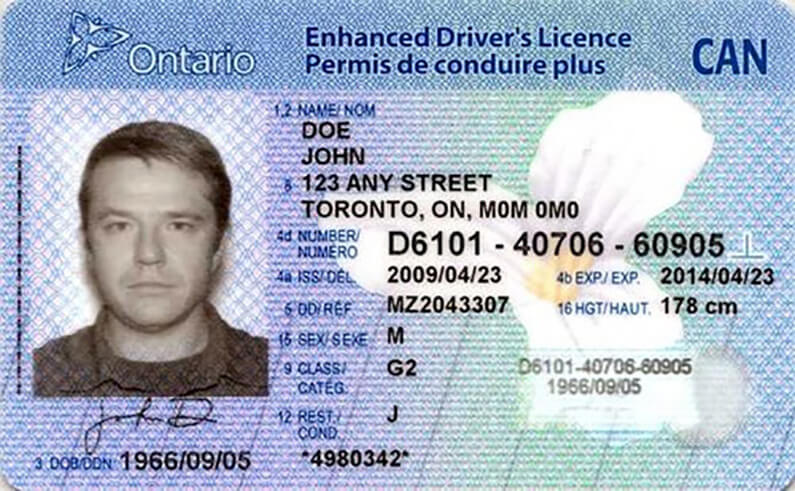- Based on 2025 ON commercial driver's licence manual
- Updated for May 2025
FREE Ontario Air Brake Practice Test
To be eligible for a commercial driver’s licence in Ontario, you must hold a Class G driver’s licence, pass a vision test, and pass a medical exam. Then you must pass a written commercial driver’s knowledge test on the theory of commercial driving. If you are applying for an Air Brake Endorsement, you must also pass a separate Air Brake knowledge test. This endorsement is mandatory for Class A, optional for Classes B through D, and unavailable for Classes E and F. The air brake test questions are based on the ON Official Air Brake Handbook.
Passing the general knowledge test will entitle you to a commercial learner’s permit, which will allow you to practice commercial driving under supervision.
When you’re ready, you can schedule a road test for your commercial driver’s licence. However, for a Class A licence, you must complete Mandatory Entry-Level Training (MELT) before taking the road test. For an Air Brakes endorsement, you must complete an MTO-approved Air Brakes course and pass an Air Brakes practical test before completing MELT (Class A) or taking the road test (Classes B through D). The Air Brakes practical test consists of a pre-trip inspection test and a brake function test.
You must take the road test in a vehicle that’s representative of the class of licence you’re applying for. For a Class A licence or another class of licence with a planned air brake endorsement, you must take the road test in a vehicle equipped with air brakes.
However, unlike reading the official Air Brake Handbook or taking a short Air Brake course, our Premium program guarantees you’ll pass the Air Brakes knowledge test – on your first try!
This is just the first of our fourteen Ontario Air Brakes Practice Tests. It includes 20 multiple-choice questions on air brakes. All questions are up to date as of May 2025 and based on the official Air Brake Manual. If you get stuck on a practice question, you can ask our AI Assistant to rephrase the question, give you a hint, or answer your own questions about commercial driving. If you still miss the question, you’ll be shown the correct answer and an explanation.
Please take all this material seriously. As a commercial driver, you may be driving on Highway 17 with its steep hills, sharp turns and severe winter conditions, Highway 400 with heavy snows and black ice in winter, or Highway 401 with heavy traffic congestion. Knowing how to inspect, test, and use air brakes can be lifesaving.
- Perfect for first-time and renewal commercial applicants, and those adding endorsements
- Triple-checked for accuracy
What you need to know

questions
correct answers to pass
passing score
- Alberta: Test 1 / Test 2
- British Columbia: Test 1 / Test 2
- Manitoba: Test 1 / Test 2
- New Brunswick: Test 1 / Test 2
- Newfoundland and Labrador: Test 1 / Test 2
- Northwest Territories: Test 1 / Test 2
- Nova Scotia: Test 1 / Test 2
- Nunavut: Test 1 / Test 2
- Prince Edward Island: Test 1 / Test 2
- Quebec: Test 1 / Test 2
- Saskatchewan: Test 1 / Test 2
- Yukon: Test 1 / Test 2
- Should you pump (keep pressing and releasing) air brakes?
- It is important to keep compressed air as dry as possible because
- What does the low air pressure warning device warn you about?
- If the low air pressure warning signal comes on, what should you do?
- The effectiveness of the spring brakes for emergencies or parking
- During normal driving, what keeps the spring brakes released?
- Assuming good traction and constant vehicle weight, if you double your speed, your vehicle's braking distance will be
- If drum brakes overheat, the vehicle's stopping distance will increase. What is the reason for this?
- Air braking systems tend to react slower than hydraulic braking systems because
- While travelling downhill, you notice that each time you want to brake, you must press the brake pedal farther down than the last time to achieve the same braking force. What could be causing this?
- The maximum air pressure available for braking is determined by
- The foot (treadle) valve
- Which of the following can impair braking effectiveness?
- After you apply the service brakes, what happens to that compressed air?
- What does an alcohol evaporator do?
- When you test the system air-loss rate, the maximum acceptable leakage rates per minute after the initial drop are
- You're driving a vehicle equipped with a dual air brake system. The low air pressure warning signal comes on, but one system still has normal pressure. What should you do?
- How should you test your vehicle's low air pressure warning signal?
- An application pressure gauge shows the air pressure
- All vehicles equipped with air brakes must have
- What is the colour coding that is often used for the supply and service lines to the trailer?
Our commitment to accuracy and quality in our practice tests
Explore our rigorous, multi-tiered verification process that ensures each question mirrors the official manual for unparalleled accuracy.

At Tests.ca, we understand the importance of reliable and accurate practice tests to help you prepare for your driver's knowledge exam. That's why we've developed a meticulous process to create and continually update our practice questions, ensuring they reflect the most current driving laws and regulations.
Here's an inside look at how we maintain the highest quality in our practice tests.
Content Creation and Verification Process
- Alignment with Official Driving Handbooks:
Every question we develop is based on the most recent version of each province's official driving manual. Our team regularly monitors each province's official website for the latest updates to ensure our practice tests are always aligned with the most current information. - Community Feedback Integration:
We leverage feedback from our vast community of users to understand which topics are most frequently tested. This helps us focus on the areas that are most relevant and beneficial for your preparation. - Expert Content Creation:
Our in-house editor, Steven, who has extensive experience in driver education, crafts each question with precision. He conducts a thorough review of each question against the official manuals to ensure accuracy. - Rigorous Review Process:
Once Steven has finalized a set of questions, our team conducts a joint review session. This second level of scrutiny involves content accuracy, proofreading, and fact-checking to eliminate any errors. - User Feedback Mechanism:
After a question goes live on our site, we keep the lines of communication open. Each question features a feedback button, inviting users to report any issues or errors. This continuous feedback loop allows us to address and rectify any concerns promptly. - Responsive Updates:
In line with our commitment to accuracy, we quickly update our practice questions to reflect any changes in the provincial government manuals. Additionally, we update the free electronic copy of the state's driver's license manuals on our site, typically within a few days after the government publishes them.
Our thorough quality control process ensures that you have access to practice tests that are as accurate and up-to-date as possible. We believe in the power of well-prepared drivers and are dedicated to providing you with the best study tools to help you succeed on your driver's knowledge exam.
Before you see your results, discover how Premium helps you:
- Real Exam-Like Ontario QuestionsQuestions match official commercial driving tests
- Interactive learningPersonal AI tutor
- 99.06% Verified Pass Rate vs. 49% AverageProven success, specialized for commercial drivers





Trusted by 14,300+ drivers
